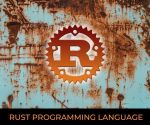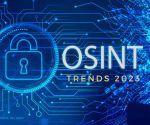“SQL databases are like Excel spreadsheets. They’re good for storing structured data that you need to query in a specific way. But if your data doesn’t fit neatly into tables and rows, it can feel like you’re trying to fit a square peg into a round hole. NoSQL databases are like a blank canvas. You can store any kind of data in any format you want, and then query it later using powerful indexing tools.”
Mike Adler, VP of Product and Engineering at Interana.
NoSQL (Not Only SQL) databases are a type of Database Management System that are becoming increasingly popular that is designed to handle large volumes of unstructured and semi-structured data. They are highly scalable, flexible, and available, making them well-suited for use in modern web applications, big data analytics, and other data-intensive use cases.
According to a survey by DB-Engines, MongoDB is the most popular NoSQL database, followed by Redis, Cassandra, Elasticsearch, and Couchbase.
The global NoSQL market size was valued at USD 3.4 billion in 2020 and is projected to reach USD 22.8 billion by 2026, at a Compound Annual Growth Rate (CAGR) of 37.0% during the forecast period.
In a survey by Couchbase, 81% of enterprises reported that they were using NoSQL databases, with nearly half (48%) using more than one NoSQL database.
The most common use cases for NoSQL databases are real-time data processing, web and mobile applications, and e-commerce. Other use cases include social media analytics, IoT, and AI/ML.
NoSQL databases are commonly used in conjunction with traditional relational databases (SQL databases). In a survey by TechRepublic, 74% of respondents reported using both NoSQL and SQL databases in their organizations.
According to a survey by DZone, the most important feature for NoSQL databases is scalability, followed by performance, ease of use, and flexibility.
NoSQL databases are used by many high-profile companies, including Amazon, Google, Facebook, Twitter, and Netflix.
Overall, the adoption of NoSQL databases is rapidly increasing as organizations seek to manage large and complex data sets. As data volumes continue to grow, NoSQL databases are likely to play an increasingly important role in the technology landscape
Difference Betwee SQL And NoSQL
SQL (Structured Query Language) and NoSQL (Not only SQL) are two different types of database management systems with distinct architectures and data models.
SQL databases are relational databases that store data in tables with fixed schemas. They use SQL to manipulate data, which provides a standardized way to interact with the database. SQL databases are best suited for applications that require complex querying and transactions, such as financial systems or e-commerce websites. Examples of popular SQL databases include Oracle, MySQL, and PostgreSQL.
On the other hand, NoSQL databases are non-relational databases that store data in a variety of ways, including key-value, document-oriented, column-oriented, or graph databases. They don’t have fixed schemas and offer flexible data models, making it easier to scale and handle large amounts of unstructured data. NoSQL databases are best suited for applications that require high performance, scalability, and availability, such as social media platforms, real-time analytics, or IoT devices. Examples of popular NoSQL databases include MongoDB, Cassandra, and DynamoDB.
SQL databases are best suited for complex querying and transactions with structured data, while NoSQL databases are better suited for high performance and scalability with unstructured data. The choice between the two depends on the specific needs of the application and its data requirements.
Describe A NoSQL Database
A NoSQL (Not Only SQL) database is a type of database management system that is designed to handle large volumes of unstructured and semi-structured data. Unlike traditional relational databases, NoSQL databases are not based on the relational model and do not use SQL as their primary query language.
NoSQL databases are designed to be highly scalable and flexible, and are often used for applications that require real-time processing of large amounts of data. They are particularly well-suited for use cases such as web applications, social media platforms, and big data analytics.
NoSQL databases can be categorized into four main types:
1. Key-value stores: Data is stored as a key-value pair, with the key used to retrieve the data.
2. Document stores: Data is stored as documents, usually in JSON or BSON format, and can be nested.
3. Column-family stores: Data is stored in columns rather than rows, and can be grouped together in column families.
4. Graph databases: Data is stored as nodes and edges, allowing for complex relationships and graph-based queries.
NoSQL databases offer several advantages over traditional relational databases, including high scalability, flexibility, and availability. However, they also have some limitations, such as limited query capabilities and data consistency issues. Therefore, it’s important to carefully evaluate the specific requirements of your application before choosing a database management system.
Advantages And Disadvantages Of NoSQL Databases
NoSQL (Not Only SQL) databases are a type of database management system that differ from traditional relational databases in several ways. Here are some advantages and disadvantages of NoSQL databases:
Advantages
- Scalability: NoSQL databases are designed to scale horizontally, which means that they can handle large amounts of data across multiple servers. This makes them ideal for applications that need to store and process large amounts of data quickly.
- Flexibility: NoSQL databases are schema-less, which means that you don’t need to define a specific schema before storing data. This makes it easier to store data in any format and change the structure of the data as needed.
- Performance: NoSQL databases can provide better performance than relational databases for certain types of data, especially when dealing with large amounts of unstructured data.
- Availability: NoSQL databases are designed to be highly available and fault-tolerant, which means that they can continue to function even if individual servers fail.
Disadvantages
- Limited functionality: NoSQL databases typically have limited functionality compared to traditional relational databases. For example, they may not support advanced querying, transactions, or referential integrity.
- Learning curve: NoSQL databases use different data models and query languages than relational databases, which means that there may be a learning curve for developers and users.
- Lack of standards: Unlike relational databases, there are no standard interfaces or query languages for NoSQL databases. This can make it difficult to switch between different NoSQL databases or integrate them with other systems.
- Data consistency: NoSQL databases typically sacrifice some degree of consistency in order to achieve scalability and performance. This can lead to data inconsistencies or conflicts in certain situations.
Overall, NoSQL databases are a good choice for applications that require scalability, flexibility, and performance, but may not be suitable for all use cases. It’s important to carefully evaluate the specific requirements of your application before choosing a database management system
Considerations For Choosing A NoSQL Database
Choosing a NoSQL database can be a complex decision that depends on several factors. Here are some important considerations to keep in mind:
- Data Model: NoSQL databases can have different data models like document-oriented, key-value, graph-based, or column-family. The choice of database depends on the type of data and the data model that suits the application needs.
- Scalability: NoSQL databases are designed to handle large-scale data and distributed systems. Choosing a database that can scale horizontally can save time and effort in the long run.
- Consistency: NoSQL databases can provide eventual consistency or strong consistency, and the choice depends on the application requirements. Strong consistency ensures that all nodes have the same data at the same time, whereas eventual consistency allows data to be inconsistent for a short period.
- Querying: NoSQL databases provide different querying mechanisms like SQL-like, MapReduce, or custom querying languages. The choice of database depends on the complexity of queries and the familiarity of developers with the querying language.
- Availability: NoSQL databases are designed to handle failures and provide high availability. Choosing a database that provides automatic failover and backup mechanisms can ensure that data is always available.
- Community support: NoSQL databases have different levels of community support, and choosing a database with an active community can help with bug fixes, updates, and new features.
- Cost: NoSQL databases can have different pricing models, including open source, paid licenses, or cloud-based services. The choice of database depends on the budget and the availability of resources to manage the database.
Popular NoSQL Databases
There are many popular NoSQL databases available, each with its own strengths and weaknesses. Here are some of the most widely used NoSQL databases:
- MongoDB: MongoDB is a document-oriented database that is particularly well-suited for use in web applications. It is known for its scalability, flexibility, and ease of use.
- Cassandra: Cassandra is a distributed database that is designed to handle large amounts of data across multiple servers. It is particularly well-suited for use in big data applications and high-traffic websites.
- Redis: Redis is an in-memory data store that is often used as a cache or message broker. It is particularly well-suited for real-time applications and is known for its speed and performance.
- Couchbase: Couchbase is a distributed database that is designed to handle both document-oriented and key-value data. It is particularly well-suited for use in mobile and web applications.
- Amazon DynamoDB: DynamoDB is a managed NoSQL database service offered by Amazon Web Services (AWS). It is designed to be highly scalable and can handle large amounts of data across multiple servers.
- Apache HBase: HBase is a column-family database that is designed to run on top of the Hadoop Distributed File System (HDFS). It is particularly well-suited for use in big data applications and is known for its scalability and fault tolerance.
These are just a few examples of the many NoSQL databases available. The choice of which database to use will depend on the specific requirements of your application, such as data structure, performance, scalability, and availability
Top 5 Use Cases For NoSQL Databases
NoSQL databases are often used in cases where traditional relational databases may not be the best fit. Here are five common use cases for NoSQL databases:
- Big Data and Real-time Analytics: NoSQL databases are well-suited for handling large volumes of unstructured or semi-structured data that are generated in real-time. Examples of such data include social media feeds, clickstreams, sensor data, and logs. NoSQL databases allow for fast read and write operations and can easily scale horizontally to handle data growth.
- High Traffic Web Applications: NoSQL databases are ideal for web applications with high traffic and a large number of concurrent users. They can handle high volumes of requests and can easily scale horizontally to meet the demands of the application.
- Content Management Systems: NoSQL databases can be used to store and manage a wide variety of content types, including images, videos, and text. They allow for easy schema-less data modeling, which makes it easy to store and retrieve content in a flexible way.
- IoT (Internet of Things): NoSQL databases are often used in IoT applications because they can handle large amounts of sensor data from different devices and sensors. They can also process this data in real-time, enabling quick decision-making.
- Graph Databases: NoSQL graph databases are used to store and manage complex relationships between entities. Examples of such relationships include social networks, recommendation systems, and fraud detection systems. Graph databases provide fast traversal of relationships and are ideal for applications that require complex querying and analysis of relationship data.
Final Thoughts
While NoSQL databases offer many advantages over traditional relational databases, such as high scalability and flexibility, they also have some limitations, such as limited query capabilities and data consistency issues. Therefore, it’s important to carefully evaluate the specific requirements of the application before choosing a Database Management System.
🅐🅚🅖
Interested in Management, Design or Technology Consulting, contact anil.kg.26@gmail.com
Get updates and news on our social channels!
LATEST POSTS
- A Tale Of Two Frameworks: Spring Boot vs. Django
 “Spring Boot’s convention over configuration approach simplifies development, allowing developers… Read more: A Tale Of Two Frameworks: Spring Boot vs. Django
“Spring Boot’s convention over configuration approach simplifies development, allowing developers… Read more: A Tale Of Two Frameworks: Spring Boot vs. Django - Unleashing The Power Of Django
 “Django, akin to a Swiss Army knife, provides a comprehensive… Read more: Unleashing The Power Of Django
“Django, akin to a Swiss Army knife, provides a comprehensive… Read more: Unleashing The Power Of Django - Potential of Progressive Web Apps (PWAs)
 “PWAs are not just about technology; they are about creating… Read more: Potential of Progressive Web Apps (PWAs)
“PWAs are not just about technology; they are about creating… Read more: Potential of Progressive Web Apps (PWAs) - Unleashing The Power Of Spring Framework
 “Spring Framework simplifies enterprise Java development, but it does so… Read more: Unleashing The Power Of Spring Framework
“Spring Framework simplifies enterprise Java development, but it does so… Read more: Unleashing The Power Of Spring Framework - Key Trends Of OSINT In 2024
 “The future of OSINT lies in our ability to adapt… Read more: Key Trends Of OSINT In 2024
“The future of OSINT lies in our ability to adapt… Read more: Key Trends Of OSINT In 2024 - Can Google’s Carbon Language Replace C++?
 “While Carbon may excel in performance-critical domains, it cannot replace… Read more: Can Google’s Carbon Language Replace C++?
“While Carbon may excel in performance-critical domains, it cannot replace… Read more: Can Google’s Carbon Language Replace C++? - Integration of Design Thinking, Lean, and Agile
 “Innovation thrives when Design Thinking, Lean, and Agile converge, creating… Read more: Integration of Design Thinking, Lean, and Agile
“Innovation thrives when Design Thinking, Lean, and Agile converge, creating… Read more: Integration of Design Thinking, Lean, and Agile - Benefits Of Infrastructure as Code (IaC)
 “Infrastructure as Code is the single most important thing you… Read more: Benefits Of Infrastructure as Code (IaC)
“Infrastructure as Code is the single most important thing you… Read more: Benefits Of Infrastructure as Code (IaC) - Power Of Internet of Everything (IoE)
 “The true power of the Intebrnet of Everything lies not… Read more: Power Of Internet of Everything (IoE)
“The true power of the Intebrnet of Everything lies not… Read more: Power Of Internet of Everything (IoE) - How Is The Enterprise IoT Evolving?
 “IoT is not just about connecting things; it’s about connecting… Read more: How Is The Enterprise IoT Evolving?
“IoT is not just about connecting things; it’s about connecting… Read more: How Is The Enterprise IoT Evolving? - IT Pricing Strategy And Models
 “The art of pricing lies in finding the perfect balance… Read more: IT Pricing Strategy And Models
“The art of pricing lies in finding the perfect balance… Read more: IT Pricing Strategy And Models - What Is SYCL (“sickle”)?
 “SYCL provides a powerful and intuitive programming model that simplifies… Read more: What Is SYCL (“sickle”)?
“SYCL provides a powerful and intuitive programming model that simplifies… Read more: What Is SYCL (“sickle”)? - What Is A Data Lakehouse?
 “With a data lakehouse, organizations can break down data silos,… Read more: What Is A Data Lakehouse?
“With a data lakehouse, organizations can break down data silos,… Read more: What Is A Data Lakehouse? - 5G – The Future Of The Internet
 “5G is the next big step in the evolution of… Read more: 5G – The Future Of The Internet
“5G is the next big step in the evolution of… Read more: 5G – The Future Of The Internet - Ransomware Groups Are Switching To Rust
 “Rust is to Ransomware what a lockpick is to a… Read more: Ransomware Groups Are Switching To Rust
“Rust is to Ransomware what a lockpick is to a… Read more: Ransomware Groups Are Switching To Rust - Streaming Data Pipelines
 “A streaming data pipeline is like a river: it flows… Read more: Streaming Data Pipelines
“A streaming data pipeline is like a river: it flows… Read more: Streaming Data Pipelines - Why Rust Is Best?
 “Rust is a systems programming language that runs blazingly fast,… Read more: Why Rust Is Best?
“Rust is a systems programming language that runs blazingly fast,… Read more: Why Rust Is Best? - Database Sharding Explained
 “Database sharding is like breaking a large puzzle into smaller,… Read more: Database Sharding Explained
“Database sharding is like breaking a large puzzle into smaller,… Read more: Database Sharding Explained - Ambient Computing Will Be The Future Tech
 “Ambient computing creates a seamless technology-rich environment, but challenges in… Read more: Ambient Computing Will Be The Future Tech
“Ambient computing creates a seamless technology-rich environment, but challenges in… Read more: Ambient Computing Will Be The Future Tech - Key Trends Of OSINT In 2023
 “OSINT is not just a technique, it’s a mindset. It’s… Read more: Key Trends Of OSINT In 2023
“OSINT is not just a technique, it’s a mindset. It’s… Read more: Key Trends Of OSINT In 2023

